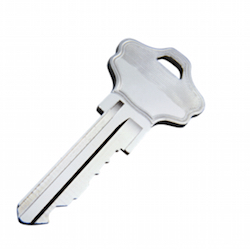
More than three-fourths (77.9%) of Americans aged 65 or more years live in owner-occupied housing, according to new data released Thursday by the U.S. Census Bureau.
The average size of these households is 2.01 people, according to the 2016 American Community Survey one-year estimates.
The survey covers every congressional district, every metropolitan division, and all counties and places with populations of 65,000 or more. It includes people living in both housing units (houses, apartments, mobile homes or rented rooms) and group quarters (including settings such as group homes and nursing homes).
Among older home-owners, according to the findings, monthly household costs represented less than 30% of income for 74.2% in the past 12 months, whereas they represented 30% or more of income for 25.8%.
The median home value was $192,400. For those with a mortgage, median monthly costs were $1,311. For those without a mortgage, median monthly costs were $459.
The ACS found that 22.1% of those aged 65 or more years lived in renter-occupied housing units, with an average household size of 1.6 people.
Gross rent as a percentage of income in the past 12 months was less than 30% of income for 46% and was 30% or more of income for 54%. Median gross rent was $814.
Of all adults aged 65 or more years, 93.4% reported living in the same house as last year, with 6.3% saying they lived in a different house in the United States than they had the previous year.
The survey found that 54.6% of seniors live in family households, and 45.4% live in nonfamily households.
Other characteristics of the country’s 65+ population, according to the survey:
Median age
- 73.2%
Sex
- Male: 44.2%
- Female: 55.8%
Have a disability
- 35.2%
Marital status
- Married: 55.2%
- Widowed: 24.2%
- Divorced: 13.7%
- Never married: 5.6%
- Separated: 1.2%
Employment status
- 17% were employed
- 0.6% considered themselves unemployed
- 82.4% were not in the labor force
Income
- 37.2% of 65+ households had earnings; mean earnings were $57,131
- 89.9% had Social Security income; mean Social Security income was $20,362
- 6.5% had Supplemental Security Income; mean Supplemental Security Income was $9,303
- 1.8% had cash public assistance income; mean cash public assistance income was $2,861
- 48.1% had retirement income; mean retirement income was $26,483
- 8.9% received food stamp benefits
Poverty status in past 12 months
- 81.2% were at or above 150% of the poverty level
- 9.6% were at 100 to 149% of the poverty level
- 9.2% were below 100% of the poverty level
Education
- High school graduation or equivalent: 31.6%
- Bachelor’s degree or higher: 26.7%
- Some college or associate’s degree: 25.3%
- Less than high school: 16.5%
Race
- White: 83.1%
- Black or African-American: 9.1%
- Hispanic or Latino origin (of any race): 8%
- Asian: 4.3%
- American Indian/Alaskan Native: 0.5%
- Native Hawaiian or Other Pacific Islander: 0.1%
Language spoken at home
- English only: 85.1%
- Language other than English: 21.6%



